An Explicit Computation in Derived Algebraic Geometry
21 Jun 2025
Earlier this week my friend Shane and I took a day and just did a bunch of computations. In the morning we did some differential geometry, where he told me some things about what he’s doing with symplectic lie algebroids. We went to get lunch, and then in the afternoon we did some computations in derived algebraic geometry. I already wrote a blog post on the differential geometry, and now I want to write one on the derived stuff too!
I’m faaaaar from an expert in this stuff, and I’m sure there’s lots of connections I could make to other subjects, or interesting general theorem statements which have these computations as special cases… Unfortunately, I don’t know enough to do that, so I’ll have to come back some day and write more blog posts once I know more!
I’ve been interested in derived geometry for a long time now, and
I’ve been sloooowly chipping away at the prerequisites –
I’ve just started reading a book which I hope will bring all these ideas together – Towards the Mathematics of Quantum Field Theory by Frédéric Paugam. It seems intense, but at least on paper I know a lot of the things he’s planning to talk about, and I’m hoping it makes good on its promise to apply its techniques to “numerous examples”. If it does, I’m sure it’ll help me understand things better so I can share them here ^_^.
In this post we’ll do two simple computations. In both cases we have a family of curves where something weird happens at a point, and in the “clasical” case this weirdness manifests as a discontinuity in some invariant. But by working with a derived version of the invariant we’ll see that at most points the classical story and the derived story agree, but at the weird point the derived story contains ~bonus information~ that renders the invariant continuous after all!
Ok, let’s actually see this in action!
First let’s look at what happens when we intersect two lines through the origin. This is the example given in Paugam’s book that made me start thinking about this stuff again.
Let’s intersect the
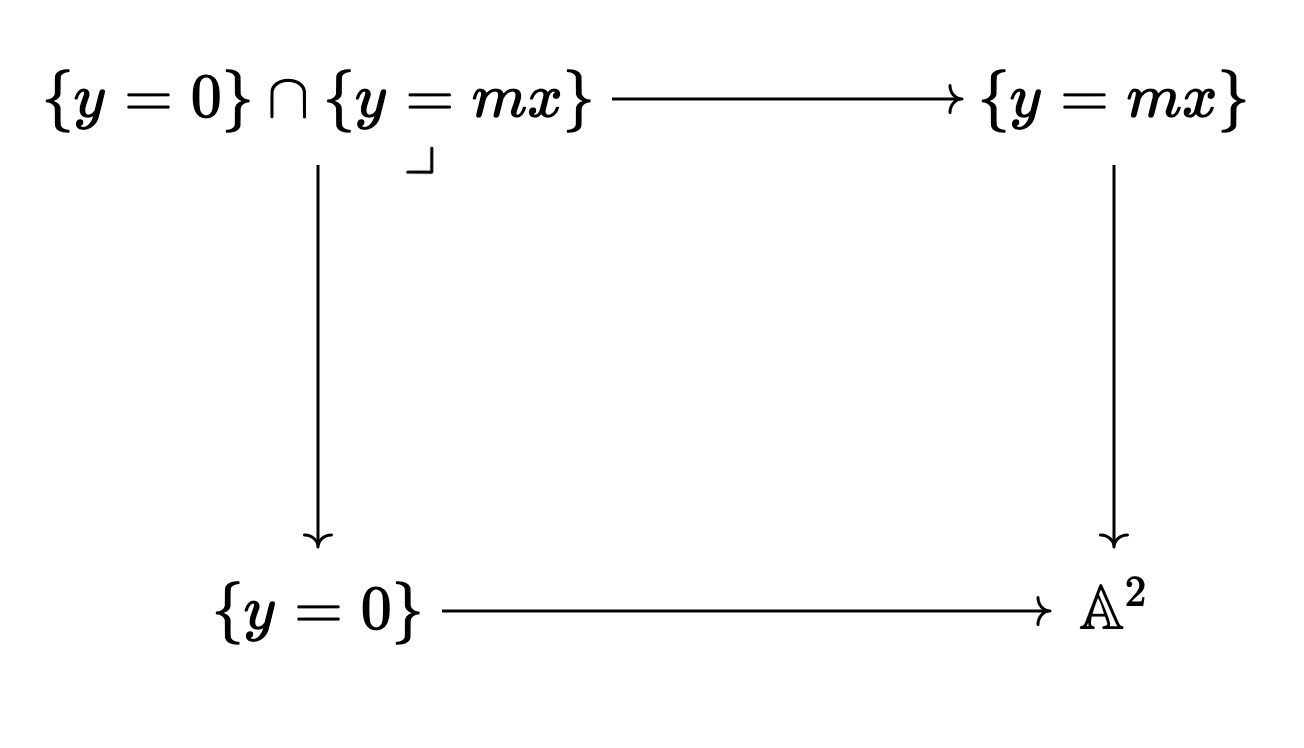
and so since everything in sight is affine, we can compute this pullback
in
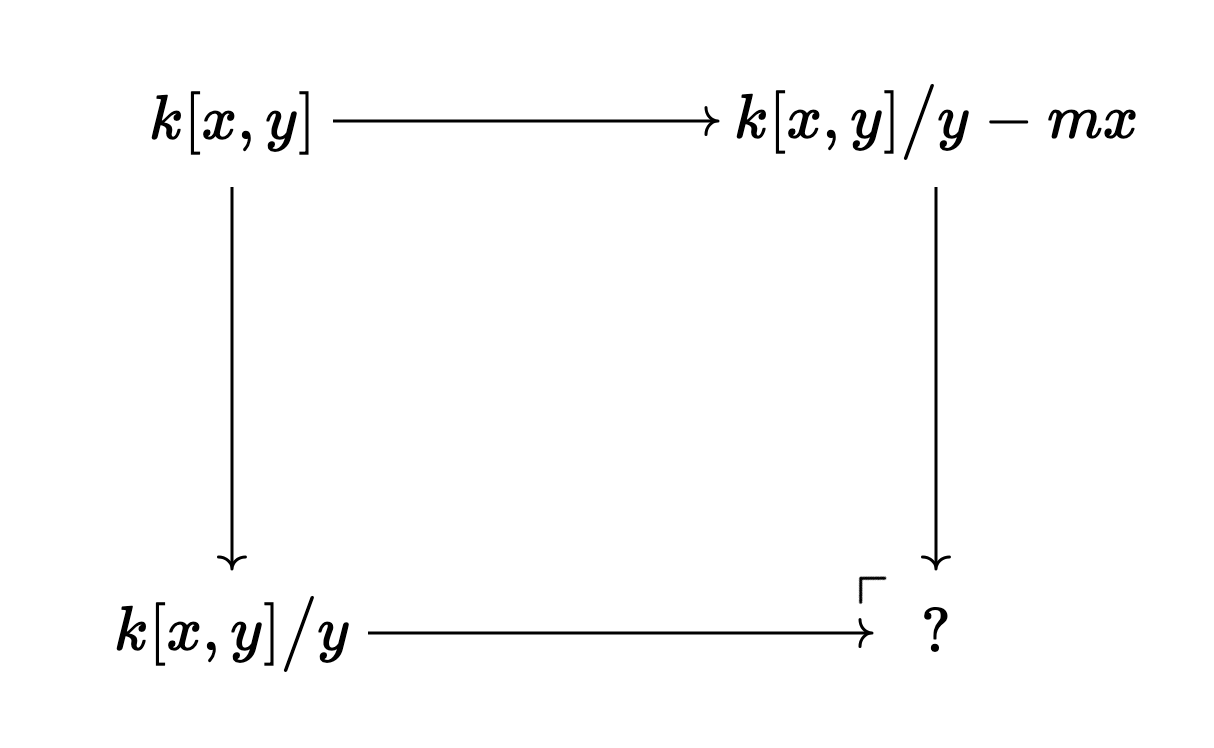
Pushouts in
which is
-
When
-
When
This is, of course, not surprising at all! We didn’t really need any commutative algebra for this, since we can just look at it!
The fact that the dimension of the intersection jumps suddenly is related
to the lack of flatness in the family of intersections
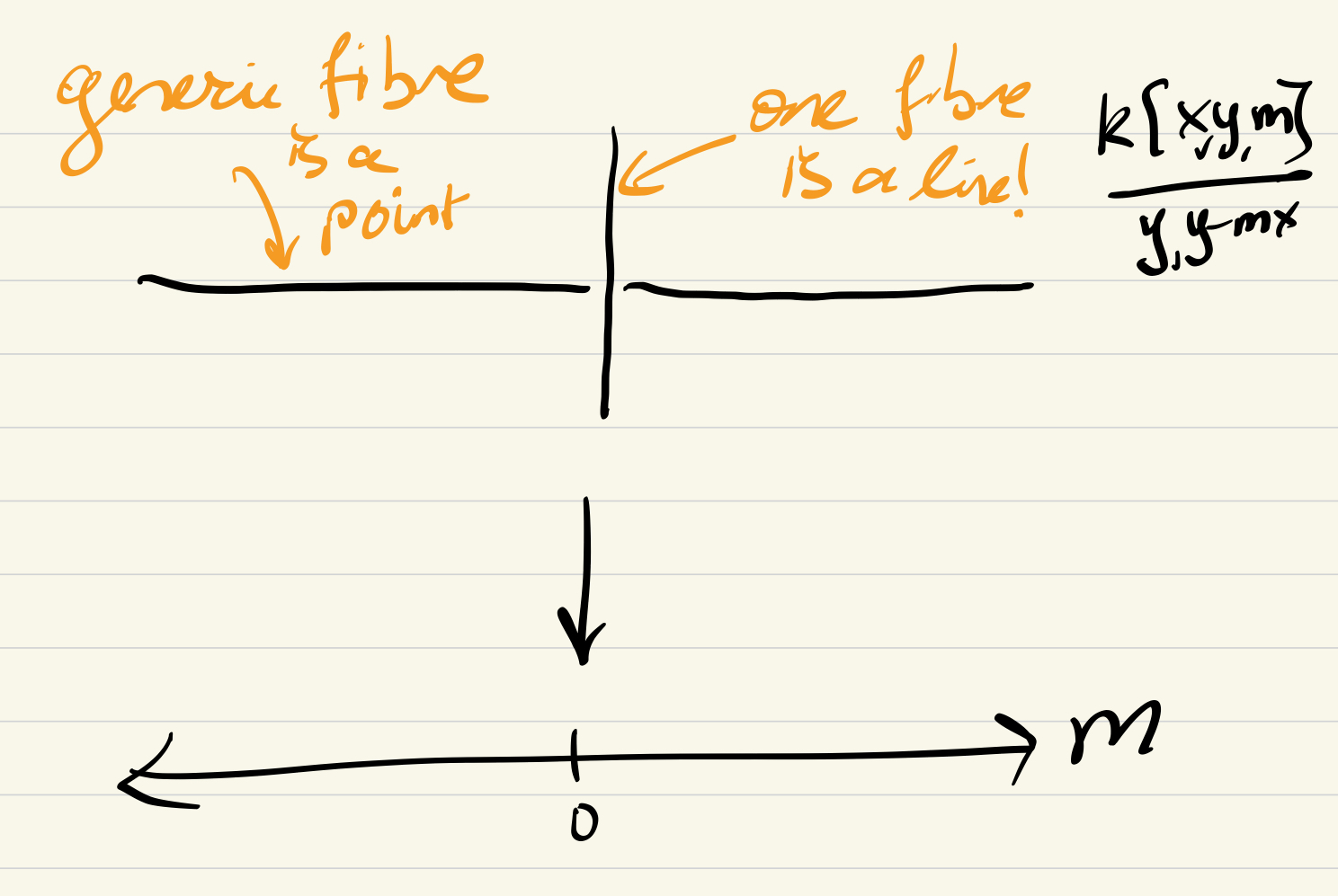
We can also see it isn’t flat algebraically since tensoring with
In the derived world, though, things are better. It’s my impression that
here flatness is a condition guaranteeing the “naive” underived computation
agrees with the “correct” derived computation. That is, flat modules
In our particular example, though, this is definitely true!
To see this we need to compute the derived tensor product
of
Here “semifree” means that our algebra is a free commutative graded algebra if we
forget about the differential. Of course, “commutative” here is in the
graded sense that
For example, if we work over the base field
If we look at the free graded
In general, elements in even degrees contribute symmetric algebras and elements in odd degrees contribute exterior algebras to the cga we’re freely generating.
What does this mean for our example? We want to compute the derived tensor
product of
Consider the cdga
So this corresponds to the chain complex
where
If we tensor this (over
where the interesting differential sends
whose homology is particularly easy to compute!
We note that
However, now there’s more information stored in
The version of “dimension” for chain complexes which is invariant under
quasi-isomorphism is the euler characteristic, and we see that now
the euler characteristic is constantly
Next let’s look at some kind of “hidden smoothness” by examining the
singular curve
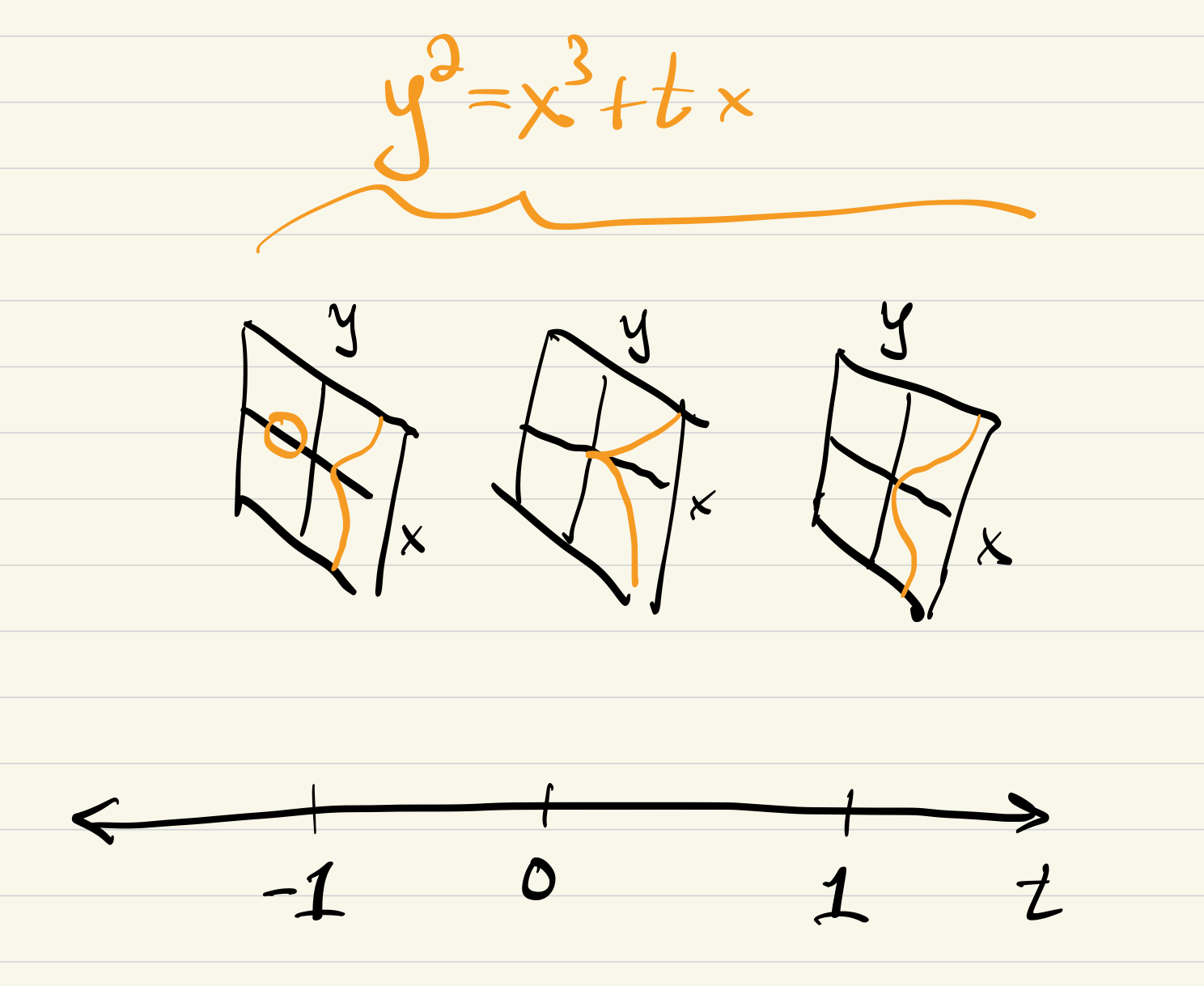
Smoothness away from the
To see the singularity, let’s compute the tangent space at
Since everything is affine, we turn the arrows around and see we want to compute the space of algebra homs
so that the composition with the map
Since
Then the “deforming the origin” condition says that moreover when we set
The tangent space at the origin of
- When
- When
Since we’re looking at curve, we expect the tangent space to be
Now we want to compute the derived homspace. As before, a cofibrant
replacement of our algebra is easy to find, it’s just
We want to compute the derived
The degree
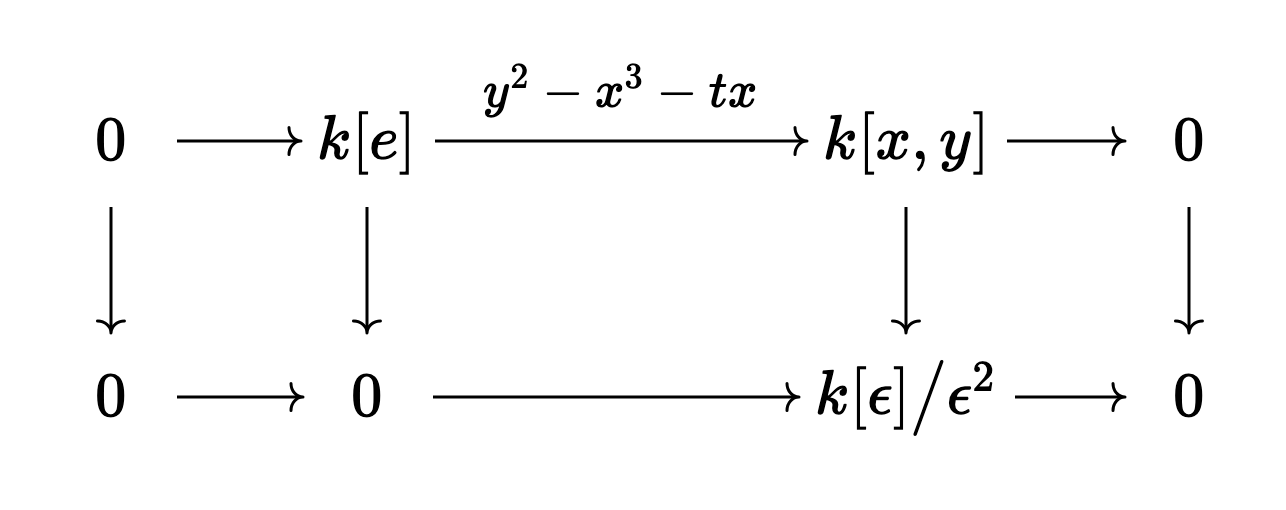
Of course, such maps are given by pairs
Next we look at degree
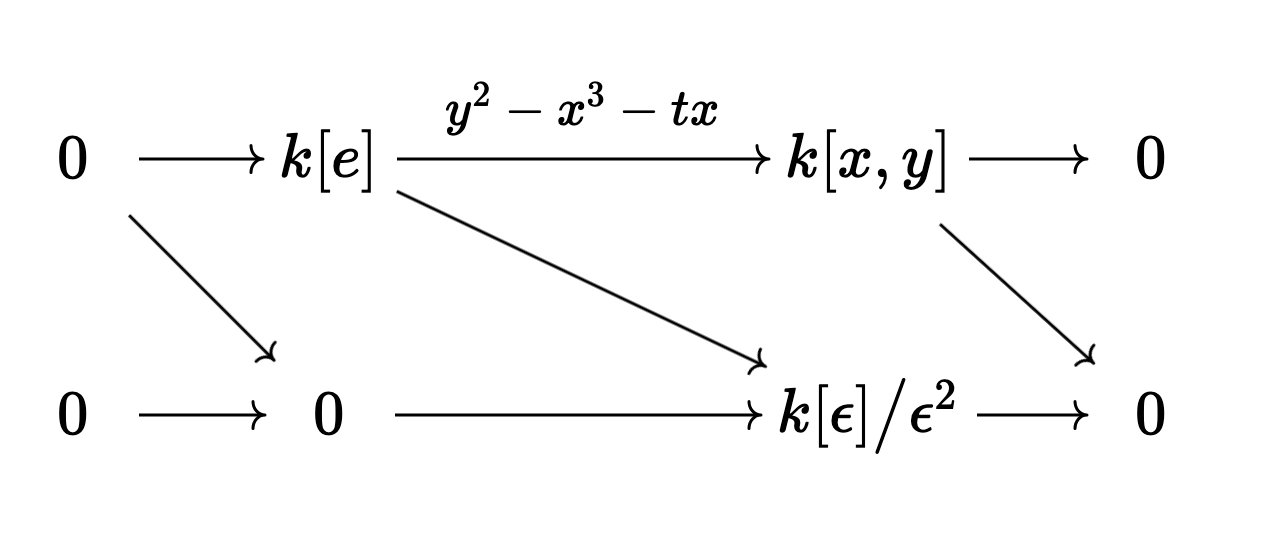
which are given by a pair
So our hom complex is
where the interesting differential sends degree
So if
So phrased purely in terms of vector spaces we see our hom complex is
(living in degrees
So we compute
When
When
Again, in the derived world, we see the euler characteristic is constantly
There’s something a bit confusing here, since there seem to be two
definitions of “homotopical smoothness”… On the one hand, in the
noncommutative geometry literature, we say that a dga
Anyways, I’m confused because we just computed that the curve
Now that I’ve written these paragarphs and thought harder about things, I think I was too quick to move between perfectness of the tangent complex and perfectness of the cotangent complex, but I should probably compute the cotangent complex and the bimodule resolution to be sure…
Unfortunately, that will have to wait for another day! I’ve spent probably too many hours over the last few days writing this and my other posts on lie algebroids. I have some kind of annoying hall algebra computations that are calling my name, and I have an idea about a new family of model categories which might be of interest… But checking that something is a model category is usually hard, so I’ve been dragging my feet a little bit.
Plus, I need to start packing soon! I’m going to europe for a bunch of conferences in a row! First a noncommutative geometry summer school hosted by the institute formerly known as MSRI, then CT of course, and lastly a cute representation theory conference in Bonn.
I’m sure I’ll learn a bunch of stuff I’ll want to talk about, so we’ll chat soon ^_^. Take care, all!
-
In fact we know more! This
-
Indeed after tensoring we get
since here
and indeed the leftmost map (multiplication by
-
Again, if you’re more careful with where this ring comes from, rather than just its isomorphism class, it’s
-
The only place it could possibly be
-
This is a misconception that I used to have, and which basically everyone I’ve talked to had at one point. Remember that dg-maps are all graded maps! Not just those which commute with the differential!
The key point is that the differential on
so that
This means that, for instance,